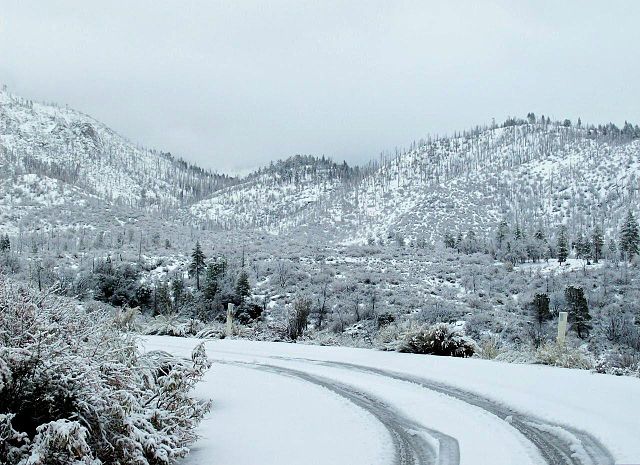Snow vs Ice
Snow and Ice are two different forms of water that are considered one and the same according to many, when strictly speaking, there is a difference between the two. Snow and ice mainly differ in the method of their formation. What both snow and ice have in common is that they are both forms of water. Snow and ice both need a cold atmosphere to be created. Ice can exist in many forms such as ice cubes, frost, etc. However, snow can only exist in one form as snowflakes. We can even say that snow is a form of ice. Let us see what more we can find about snow and ice that will help us to understand the difference between snow and ice better.
What is Ice?
Ice is a frozen form of water. Ice can be formed due to cool frozen winds that tend to convert transparent flowing water into becoming solid. So, ice is nothing but frozen water. We have said that ice forms due to natural causes. However, ice can be formed artificially too. Ice can be formed artificially in the refrigerator in our homes. They are used in the making of cool drinks to quench our thirst in summer. Ice is also generally used to mix alcoholic beverages. Ice blocks are used to keep things cool too.

What is Snow?
According to American Heritage Dictionary, snow is ‘frozen precipitation consisting of hexagonally symmetrical ice crystals that form soft, white flakes.’ When it comes to the method of formation, snow is formed naturally due to the effect of the seasonal and climatic conditions. In other words, it can be said that snow naturally falls onto the earth in consonance with the climatic conditions. This is one of the main differences between snow and ice.
When atmospheric vapor becomes frozen, it becomes snow, and it is quite natural that it falls in winter on earth. Snow is frozen atmospheric vapor.
When it comes to producing snow artificially, we understand that snow cannot be formed artificially to have a similar effect as real snow. This is an important difference between snow and ice. We cannot produce or form snow artificially using our refrigerator as we did for ice. Snow has to be produced and formed naturally due to the effect of the climatic conditions and seasonal changes. The snow that you see as artificial snow or man-made snow becomes really icy after a little while which is not the case with real snow. Also, artificial snow is not as fluffier as real snow.
Snow can thus be seen only in winters in the areas characterized by high altitudes. It is interesting to note that snow can be seen at any time in areas near the Polar region.

What is the difference between Snow and Ice?
Definitions of Snow and Ice:
Ice: Ice is a frozen form of water.
Snow: Snow is frozen atmospheric vapor.
Characteristics of Snow and Ice:
Method of Formation:
Ice: Ice can be formed due to cool frozen winds. Ice can also be formed using a refrigerator.
Snow: Snow is formed naturally due to the effect of the seasonal and climatic conditions.
Creating Artificially:
Ice: People can create ice artificially using a refrigerator.
Snow: Snow cannot be created artificially to be as the same as the natural snow.
Food and Beverages:
Ice: Ice is used as cubes to cool beverages such as alcohol and fruit juices. Ice is also used to make food items such as popsicles. Even the so called snow cones and snow ice cream are made of shaved ice.
Snow: Snow is not used to create food items.
Recreational Activities:
Ice: Ice is used to play sports such as ice skating.
Snow: Snow is used to play sports such as snowboarding and for fun activities such as making snowmen.
Images Courtesy:
ncG1vNJzZmivp6x7pbXFn5yrnZ6YsqOx07CcnqZemLyue8OinZ%2Bdopq7pLGMm5ytr5Wau26%2FzaiuZpmemXq3v4yimp5n